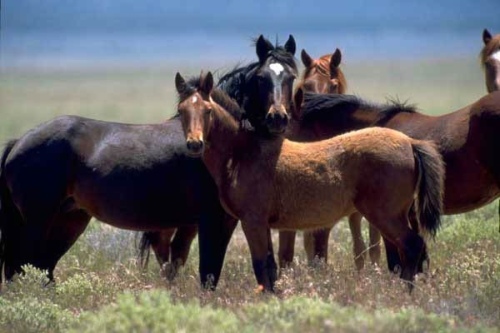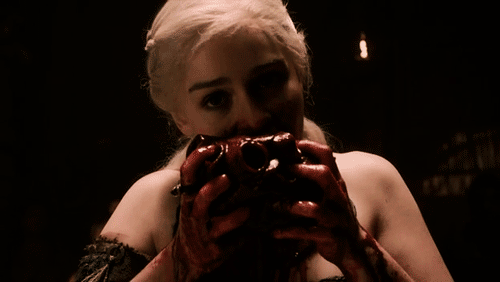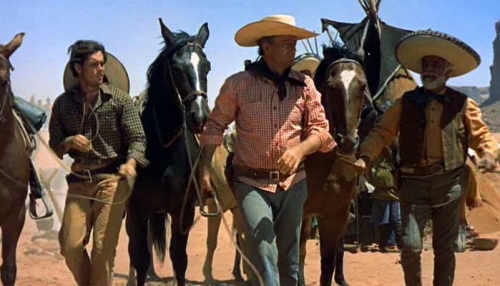
Image Credit the Bureau of Land Management
In George Lucas's Star Wars: The Empire Strikes Back, Han Solo rides a tauntaun out into the frozen wastes of Hoth; he needs to find his friend, Luke Skywalker. In George R. R. Martin's Game of Thrones, Deanerys Targaryen, a princess in exile, takes center stage in a ceremony for the sake of her child-to-be. She has to eat a raw, fresh horse heart. In Washington County, a Portland woman and her friend buy a near dead horse, shoot it in the head, cut it open, and take pictures, lots of bloody pictures. The following post does not contain these images (a future post will, though).

Image Credit Star Wars: The Empire Strikes Back
Han Solo has to find his friend. He saddles his tauntaun and rides out into the rapidly freezing night. He's told that he won't get far. His tauntaun will freeze before he reaches the first marker. Han doesn't care. Han doesn't care about his tauntaun, and there's no real distinction made, on his part, between this living transportation and his normal mechanical means of getting around. The tauntuans are pretty strange; they look like a kangaroo-dinosaur blend. What almost instantly endears them to the audience, though, is that he saddles the animal; it has reins. Han's a real space cowboy now. He, for a moment, has a real live horse. These tauntauns, too, have perhaps the most pathos filled utterance of any creature in Star Wars. They are filled with emotion. Well, that's the case until Han cuts his now dead tauntaun open and we see that it's filled with guts. Han, as he stuffs Luke into the tauntaun, notes its stink. The tauntuan--dead, sliced open, and stuffed with Luke, is left without a shred of dignity.

Image Credit Game of Thrones via Nerdy Gamer Girl
[A slight note to the reader. While I didn't feel terrible about spoiling a thirty year old movie Game of Thrones (show and book both) are slightly more recent. So, (slight) spoiler warning.]
Deanerys, still pretty much a child, is married off to an older man, the leader of a people dependent on horses. He frightens her, but she learns to love him, and she learns to love the horses. When she discovers that she is pregnant she is taken to some elders and told to eat a horse heart to prove that she's woman enough bear her husband's child. In the book, Martin doesn't spend terribly much time describing the horse eating, but in the show they give us a lavish scene. We don't see the heart cut from any horse, and in some ways it's presented as its own object, free of any horsey connections, much as you might buy from a store. Well, not quite store like. The heart is still, seemingly, full of blood, and as Deanerys works her way through the several pounds of flesh she gets covered. The scene is hard to watch; she, covered in blood, shiny and slimy, nauseous. She chokes down every bite.

Image Credit The Searchers via Gone Movie
We don't, as a general rule, eat horses in the United States. Wikipedia has a nice run down of various historical reasons horsemeat is taboo in different cultures, but one of the most convincing reasons that I have heard for the American distaste of horse meat is that horses are looked at less as beasts and more as companion animals. People talk about cowboys and their relationship with horses as fundamentally ingrained in an American imaginary. And while I don't know if there is any particular research to back up these claims, having grown up watching westerns as a little boy they strike a chord with me. But the horse, the cowboy's companion, is always still an animal. It can be killed, but its killing, while not a damning act is at least worrisome. Horses occupy the curious double space of both means of transportation and friend.

Image Credit Lonesome Dove via American Bedu
[My post is full of spoilers today. Both Lonesome Dove and True Grit are pretty old, but with the new True Grit getting released recently I thought that I'd give a heads up for anyone that is about to watch it.]
They have personality when the story demands and none when it doesn't, and these switches seldom need justification. In Larry McMurtry's Lonesome Dove there are named horses and unnamed Gus cuts his unnamed horse down and uses it to hide from gunshot--neither McMurtry nor the reader skip a beat in killing the animal. A good portion of the first chapter, and throughout the rest of the long novel, Captain Call interacts with a horse; he has a relationship with the Hell Bitch. She's as tough, tougher maybe than he is.

Image Credit True Grit via The Diplomacy of Kasey Driscoll
Han's search for Luke and tauntaun sacrifice mirrors Rooster's race to save Mattie's life in True Grit. Throughout the story (equally held up in both films, and I assume the novel) horses are front and center. They're haggled over, argued about, praised. And though different characters approach them with different intensities, Mattie’s care and affection for the horses isn't played off as a little girl's whims. Her strength, throughout the story is apparent, and her relationship with her horse Little Blackie is presented as genuine and admirable. But Rooster sacrifices Little Blackie--sacrifice cleans things up too much. He brutally rides him to death. In the more recent film this point is amplified. Rooster rides Little Blackie as far and fast as he'll go, then stabs him to push him further. Once Little Blackie falls Rooster shoots him. But Mattie is saved. The climax of the film revolves around this horse. The characters are forgotten and we feel for the horse; Rooster disgusts us. Minutes after the horse is dead he is forgotten, though. The film ends firmly focused on Mattie and Rooster, neither are disgusting.
That horses are disposable and relatable for many people raised on westerns and American horse culture is why the story of Jasha Lottin is so strange. In next week's post I'll be focused on her actions and pictures.






Recent comments
2 years 29 weeks ago
2 years 44 weeks ago
2 years 44 weeks ago
2 years 50 weeks ago
3 years 4 weeks ago
3 years 4 weeks ago
3 years 4 weeks ago
3 years 6 weeks ago
3 years 6 weeks ago
3 years 6 weeks ago